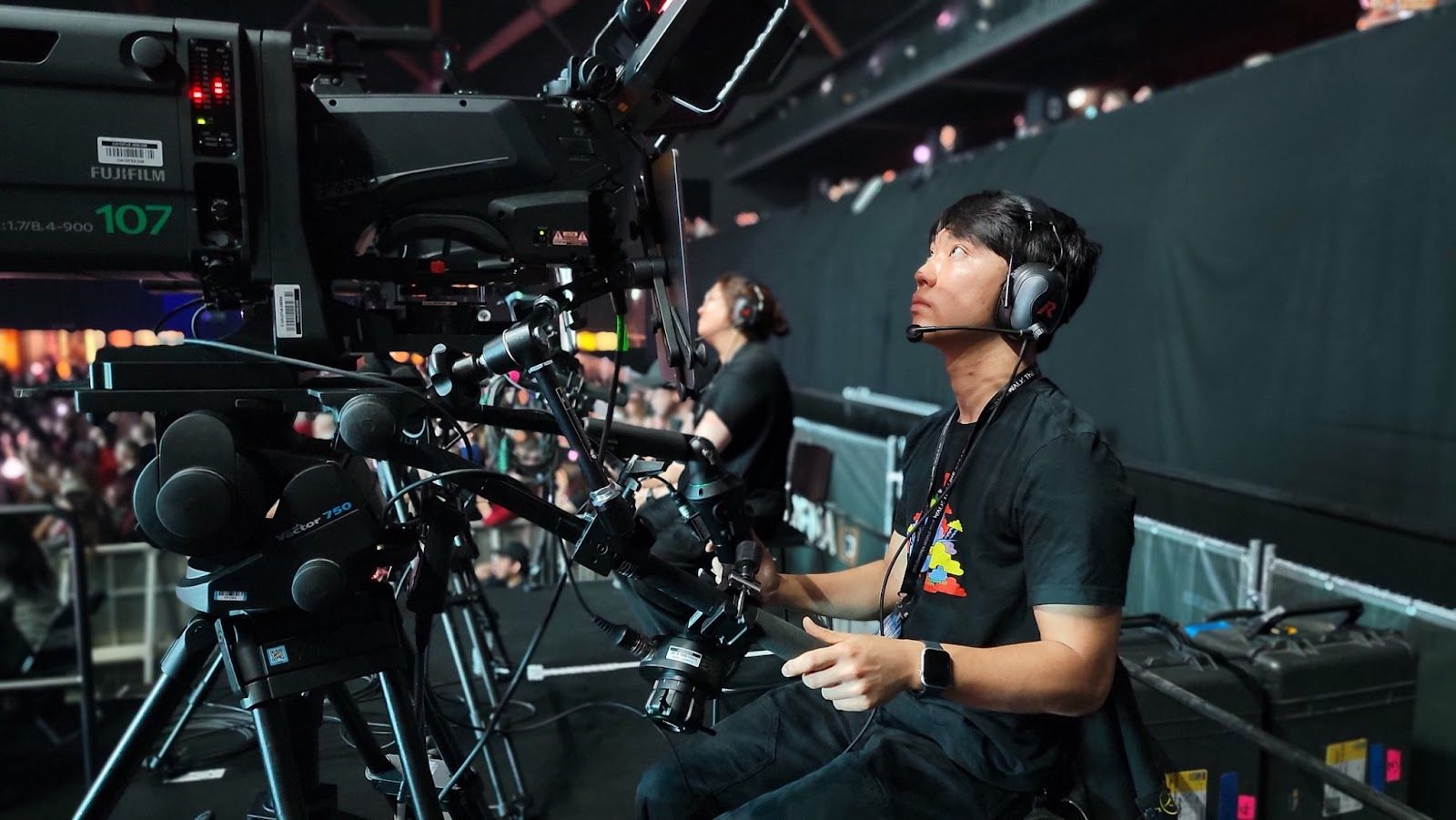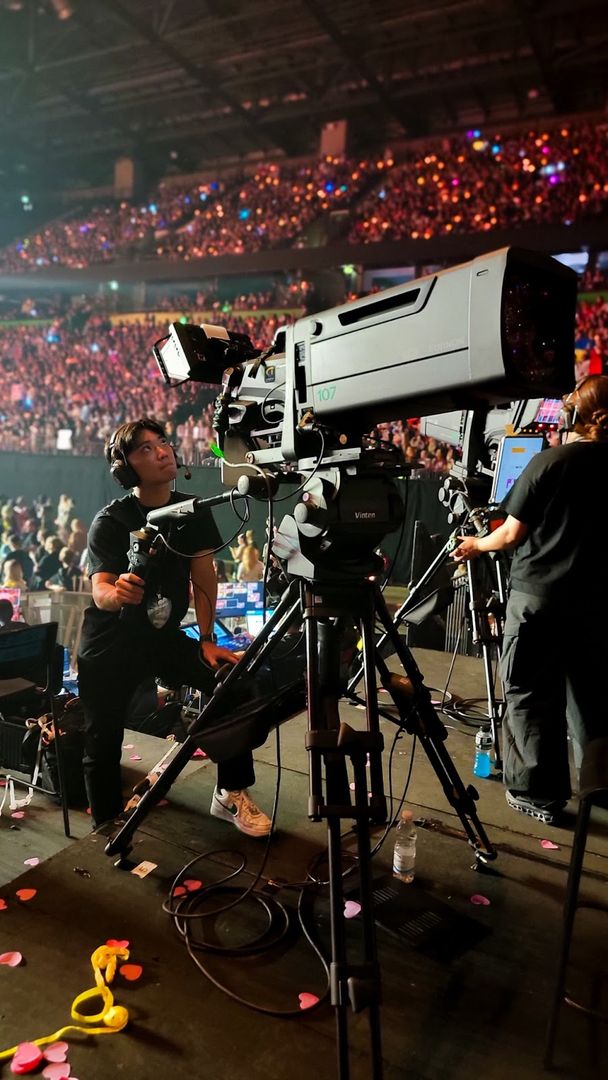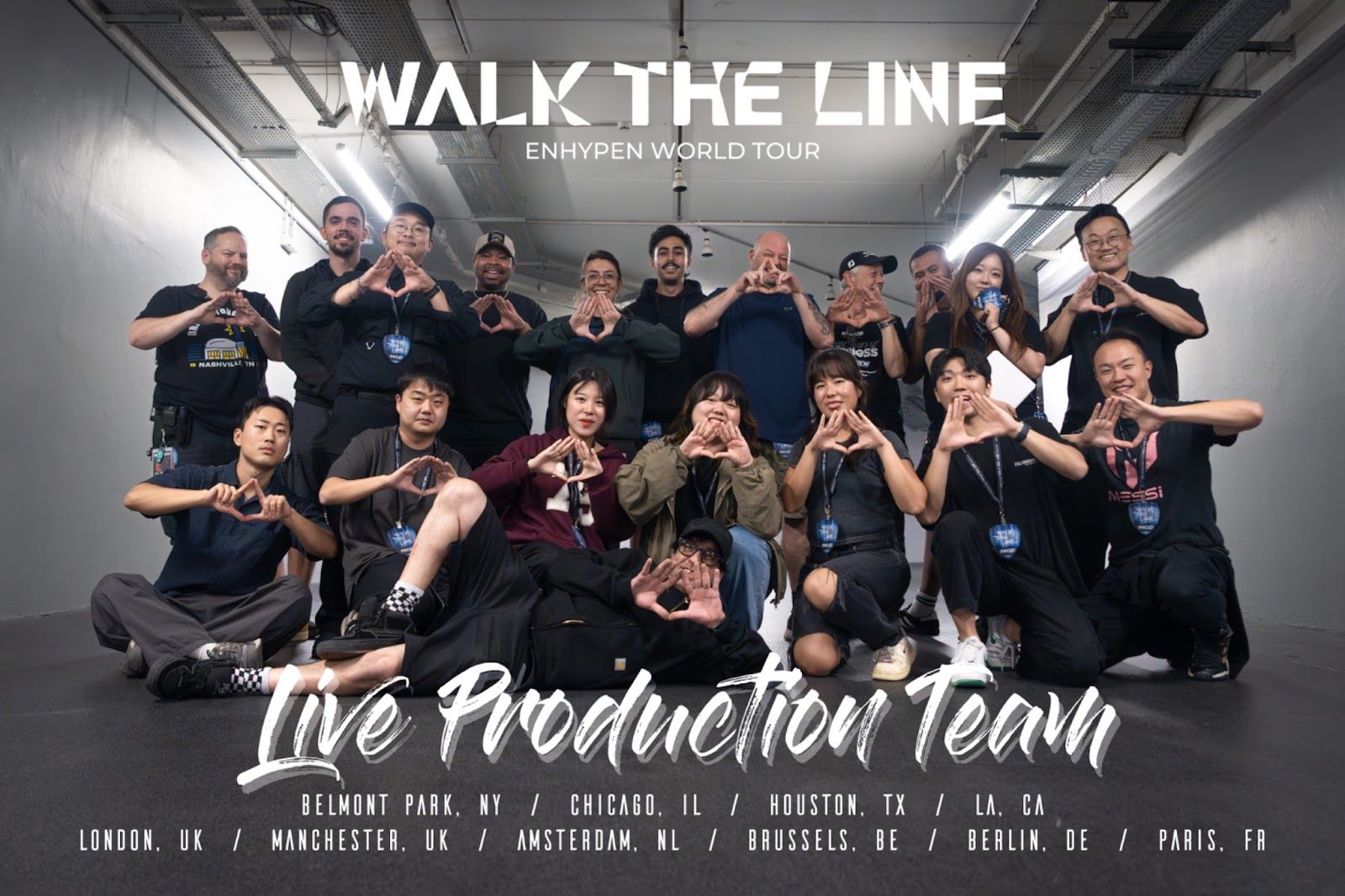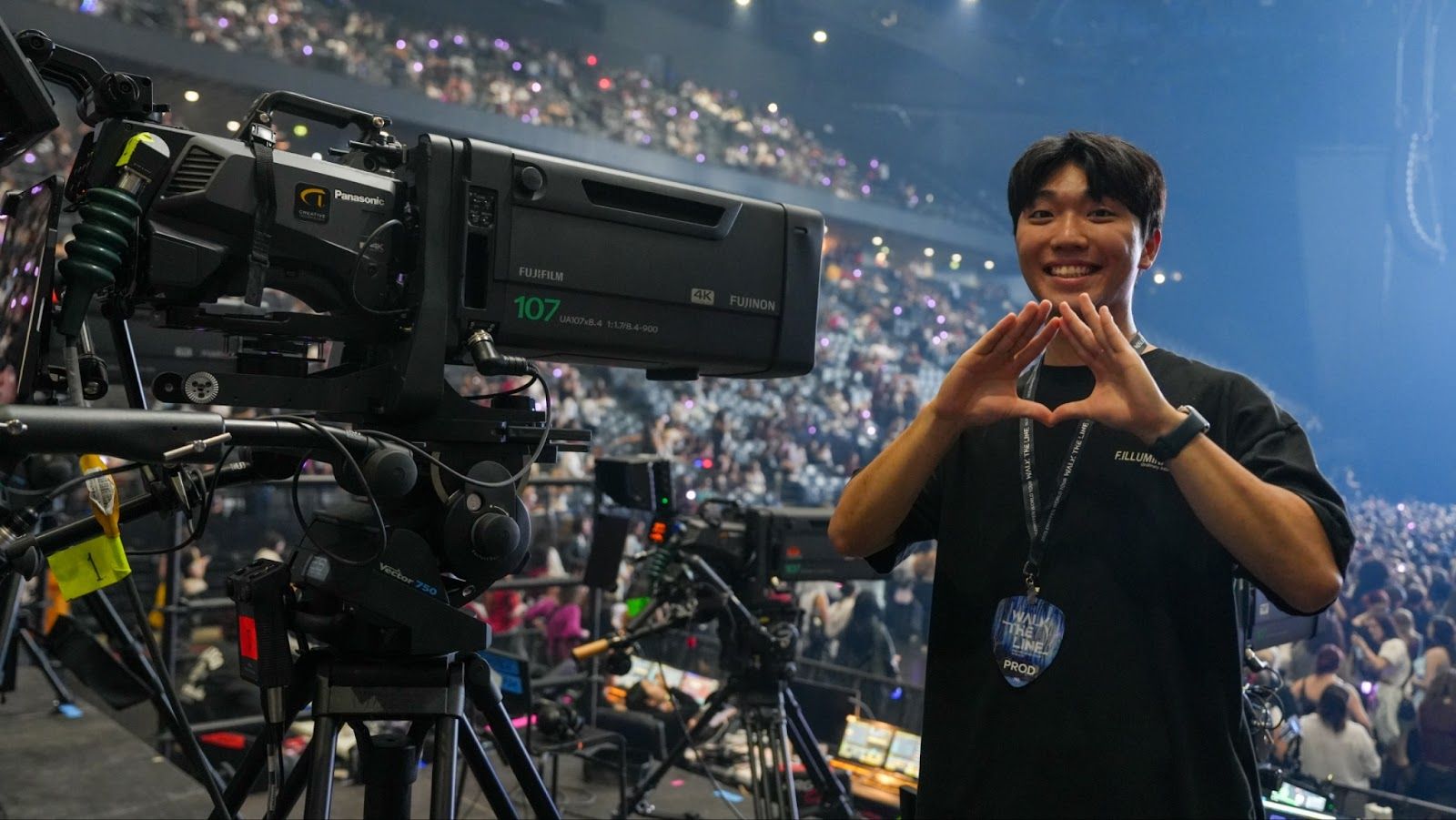
2025-10-15
Written by Jasper Collins
Interview by Artisan Global
When the lights dim and the first chord echoes through a packed arena, few notice the figure stationed nearly 200 meters from the stage — eyes fixed through the lens, hands steady despite the pulse of twenty-five thousand fans. That’s where cinematographer and camera operator Phelix Hyunsung Choi brings K-pop’s visual storytelling to life.
I first came to the U.S. in 2019 to study Film and Television at the Savannah College of Art and Design (SCAD), where I also minored in Cinematography. During my studies, I participated in numerous short films as a Director of Photography, refining my eye for all the aspects of filmmaking. Each project helped me bridge the gap between artistic intent and technical precision — a balance I continue to pursue in every live production today.
I began working in Korea’s commercial film industry in 2020, starting as a Grip & Electric crew member on the feature Men of Plastic, and later contributing to TV series such as Desperate Mr. X, Summer Strike, and Blind. I also joined international commercial shoots like the Guinness x EPL campaign, where I learned how to adapt between Korean and foreign production systems. These experiences built my technical confidence and gave me a deep respect for the collaborative nature of filmmaking.
After graduating, I joined A212 Production, a company specializing in K-pop world tour camera operations. I was assigned as one of a select few camera operators for ENHYPEN’s Walk the Line World Tour — a massive project spanning 12 shows across the U.S. and Europe, including venues like The O2 in London, Accor Arena in Paris, and Uber Arena in Berlin, each hosting around 25,000 fans per night. With over 200 staff members on site, precision and communication were crucial at every moment.
Unlike studio work, live production gives you one chance — no retakes, no safety nets. I operated a fixed long-range camera nearly 200 meters from the stage. Every pan, zoom, and focus pull had to align perfectly with the music’s rhythm and lighting cues. The physical and mental pressure was immense, but that’s what makes it beautiful. When everything comes together — the visuals, the sound, the fans’ reaction — there’s this indescribable energy that makes all the exhaustion worth it.

Our camera team studies every song hundreds of times before the show — analyzing stage layouts, lighting transitions, and choreography patterns. I always remind myself that the audience’s emotional connection depends on how well we capture that fleeting moment. It’s a discipline that demands technical mastery, instinct, and timing all at once.
Very few camera operators can navigate both Korean and international production systems fluently. In world tours like ENHYPEN’s, we collaborate closely with both Korean creative directors and Western technical teams from the U.S. and U.K. Being bilingual and culturally adaptable allows me to mediate between those worlds seamlessly — an ability that’s become essential as K-pop continues to globalize its production scale.

I take pride in being a multidisciplinary filmmaker — someone who understands cameras, lighting, grip systems, and live directing from the inside out. Every project I take on benefits from that versatility. I believe visual storytelling isn’t just about what’s seen through the lens, but about how deeply you understand every element supporting that image.
My goal is to keep bridging the visual language of live performance and cinematic storytelling. Working on ENHYPEN’s Walk the Line tour reminded me how powerful music visuals can be in uniting cultures. I hope to continue shaping that connection — bringing Korean artistry to global stages through my lens, one frame at a time

As K-pop’s international reach grows, professionals like Phelix Hyunsung Choi stand at the intersection of artistry and global collaboration. His rare fluency across both creative and technical languages — Korean and English, film and live production — positions him not just as a skilled operator, but as a vital link in the evolution of the industry’s visual frontier.